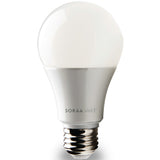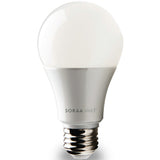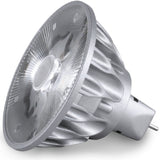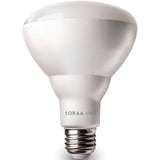30 Years of the Blue LED Revolution
Posted by Dave on for ProLampSales

In a world suddenly awash with LED light bulbs and fixtures on the market providing stunning white light for homes and businesses, it is easy to forget how recently the only LEDs we laid eyes on were single diode red and green dots blinking at us from instrument panels, most likely 1980s-era audio or computer equipment.
The missing link that took years to develop, with many failures along the way, was the blue LED. Finally in the mid-1990s, three Japanese physicists, Isamu Akasaki, Hiroshi Amono and Shuji Nakamura, produced bright blue light from their semi-conductors and helped launch what has become the most significant transformation in lighting since Thomas Edison's original incandescent bulb. For their significant contribution to long lasting, energy efficient lighting that is changing the way buildings are illuminated around the world, they shared the 2014 Nobel Prize in Physics.
The invention of the blue light emitting diode made solid state white light possible. Mix blue with red and green LEDs and the result is bright white light. Blue was the holy grail for moving LEDs from a bit role in instrument panels, to the prime time of illuminating building facades, bridges, monuments, art galleries, schools, hospitals, businesses and homes. Now, for a few dollars, anyone can purchase a strip of blue LEDs, or get RGBW color-changing LED lights that can set to white, blue, red, green, or any hue imaginable.
After the breakthrough by these Nobel winners, it took a decade or so of improvements until today, LED white light has achieved over 300 lumens per watt, compared to incandescent at 16 lumens per watt and fluorescent at 80 lumens per watt.
The blue light emitting diode, just 30 years old now, has revolutionized lighting and established the LED as the dominant light source of the 21st century. And the contribution of the invention of the blue LED will lead to far more than a change in lighting; for communities without adequate access to the energy necessary to power inefficient lighting technology, white LEDs light, according to the Nobel Prize website, "holds great promise for increasing the quality of life for over 1.5 billion people around the world who lack access to electricity grids."
Why was the blue LED such an achievement?
The blue LED transformed the lighting industry and the world. Today, it is the reason we have LED bulbs that emit white light.
The bottom line is that, without white light from LEDs, they would not be viable for most applications. Who wants to sit at work all day under a green or red light?
Until blue, green, and red light could be combined in LED technology to emit white light, colored lights were the only application for LEDs.
But once the blue LED was invented and LEDs could emit white light, it was off to the races. LED technology was late to the game after incandescent, halogen, HID, and fluorescent, but it has become the most versatile and cost-efficient form of lighting in the world.
Featured Products (View All)
- 0 Comments
- Posted in LED
0 Comments




